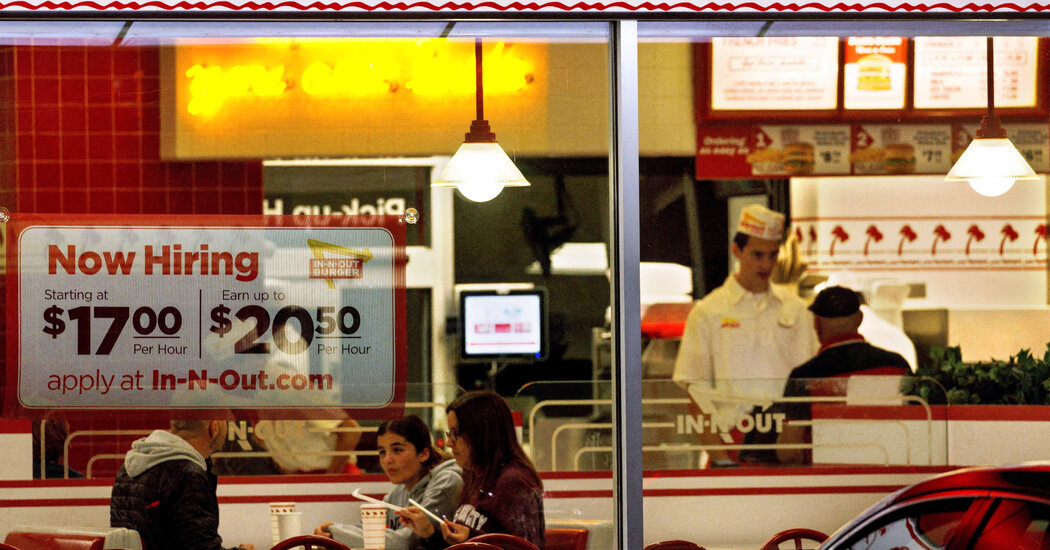China’s Exports Surge as Trade Tensions Near Boiling Point
China’s exports rose in May at the quickest pace in more than a year, the government said on Friday, as a flood of appliances, cars and electronics poured out of factories and the prospect of a global backlash grew.
The value of China’s exports climbed 7.6 percent compared with May 2023, even as the prices of many manufactured goods coming out of China are falling.
China is rapidly building new factories and expanding existing ones as part of a national strategy. But spending is weak by Chinese households, because of a long and increasingly steep slide in prices for their apartments.
Much of the extra factory production is being exported. With fewer Chinese families buying new apartments, fewer household appliances are sold domestically, for example. The government said that the value of exports of appliances climbed 18.3 percent in May compared with the same month a year earlier. And because demand is so weak in China, appliance prices have tumbled. The actual number of appliances exported last month rose 27.8 percent.
China’s trade surplus, the difference between what it earns selling goods to the world and what it spends on imports, expanded in May to $82.6 billion. That was up 25.6 percent from a year earlier. It was the largest ever for May and one of the highest months ever except during the pandemic, when China exported huge quantities of medical gear, exercise equipment and other manufactured goods.
China’s trade surplus has tended to be fairly low in May and much higher later in the year, when its exporters supply goods for the Christmas season.
The quantity of many exports, not just household appliances, has been rising faster than their value. So many containers full of goods are leaving China, as fewer come back with imports, that shipping lines have been running short of containers in China.
The value of China’s imports rose only 1.8 percent in May.
Chinese companies are starting to face more trade barriers. President Biden raised tariffs on May 14 on about 4 percent of China’s exports to the United States. The European Union is expected to decide as soon as next week whether to impose tariffs on China’s electric car exports. Developing countries like Brazil and India are also taking steps to protect their factories and industrial workers from Chinese competition.
China said on Friday that the export value of trucks and cars rose 16.3 percent in May from a year earlier. The breakdown among gasoline-powered cars, electric cars and diesel trucks is typically released later in the month.
Increased tariffs do not appear to have done much harm yet to China’s exports, and might even help in the short term. Some Chinese companies have rushed to send goods to emerging markets in Latin America and elsewhere before tariffs can take effect.
In the past year, China has stepped up exports to Vietnam and Mexico, where goods can be reprocessed and then shipped on to the United States or Europe with low or no tariffs. These more complicated trade routes, coupled with weakness in China’s currency exchange rate, may reduce tariffs’ effectiveness, said Capital Economics, a research firm.
“Even once tariffs are in force, their impact could be mitigated through trade rerouting and adjustments in the exchange rate,” the firm said in a research note.
China’s rising surpluses are helping to offset a weak domestic economy.
The reluctance of Chinese consumers to spend is readily visible on the streets of Shanghai and Beijing. Many restaurants in Shanghai and Beijing are empty even on weekend nights. Stores have few or no customers, and shopkeepers stand around looking bored. Low-priced cosmetics made in China are squeezing out costlier foreign brands, and sales of spirits have faltered as consumers buy beer instead.
The United States this week reported that its trade deficit had widened significantly in April to $74.6 billion. J.P. Morgan said in a research note that the country’s trade deficit was likely to eat into its economic growth this spring, knocking nearly a full percentage point off the growth rate from April through June. The U.S. economy grew at an annual rate of 1.3 percent in the first three months of this year.
Li You contributed research.


